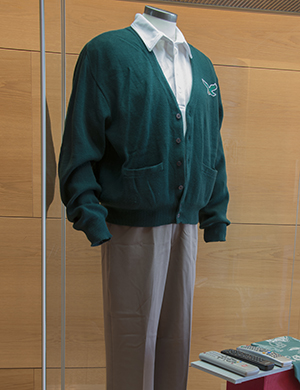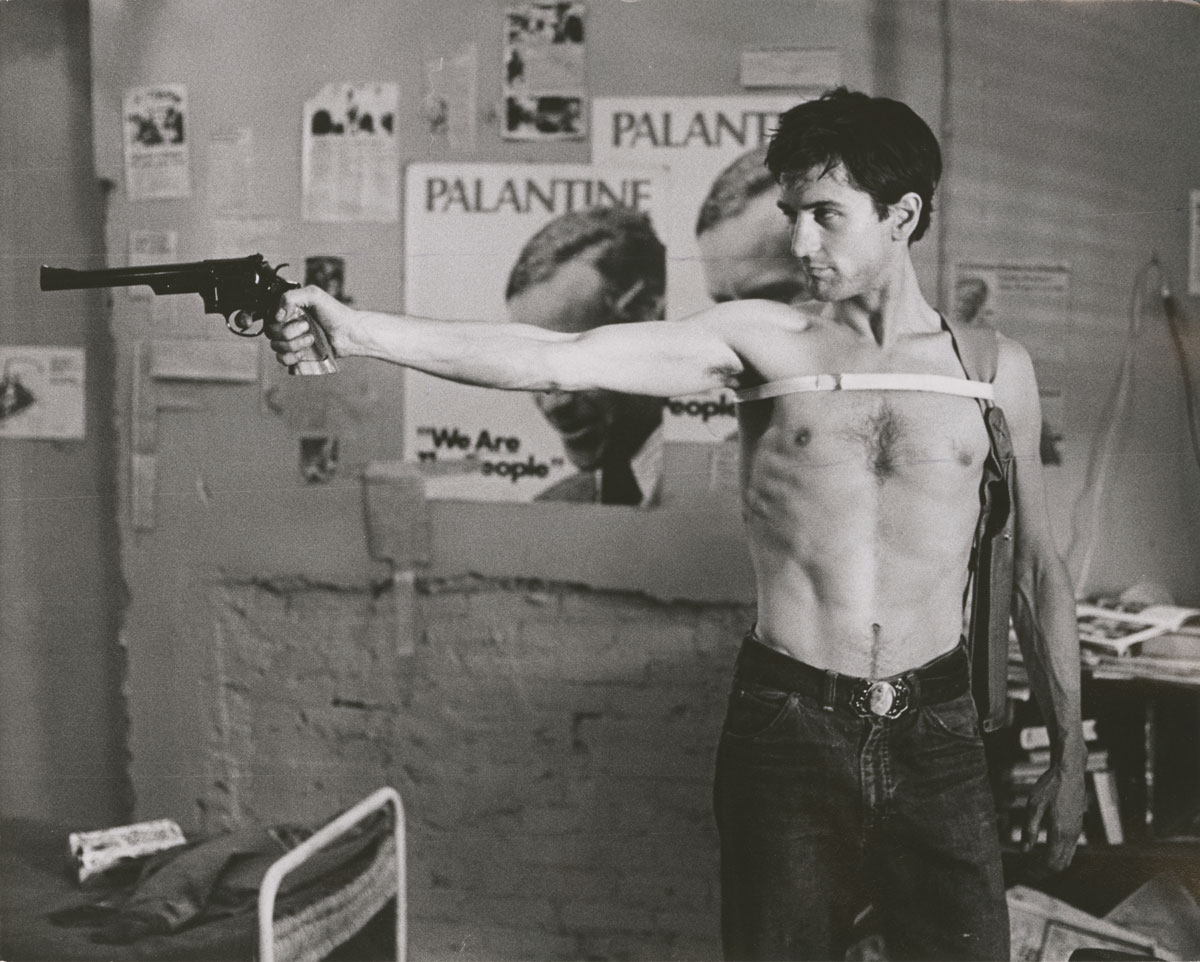Forty years ago, Taxi Driver was released to critical and popular acclaim and its most famous line, “You talkin’ to me?” instantly became one of the most memorable lines in film history. [Read more…] about “You talkin’ to me?”
Martin Scorsese
Robert De Niro’s “Silver Linings Playbook” costume ensemble on view
Robert De Niro received his seventh Academy Award® nomination for his supporting role in Silver Linings Playbook (2012). The Ransom Center holds De Niro’s collection of papers and costumes and props, which includes materials from each of his nominated roles in Cape Fear (1991), Awakenings (1990), Raging Bull (1980), The Deer Hunter (1978), Taxi Driver (1976), and The Godfather Part II (1974). De Niro won Oscars® for his leading role in Raging Bull and his supporting role in The Godfather Part II.
One of the costume ensembles worn by De Niro in Silver Linings Playbook is on display in the Ransom Center’s lobby, alongside his character’s television remote controls and Philadelphia Eagles handkerchief. Below, Assistant Curator of Costumes and Personal Effects Jill Morena writes about the importance of costumes and props to actors.

Costumes and props aid an actor to arrive at the mental and physical place of inhabiting and expressing the character he or she is portraying. They can also help illuminate the physical aspect and embodiment of performance.
In director David O. Russell’s Silver Linings Playbook, Robert De Niro plays Pat Solitano, Sr., a passionate Philadelphia Eagles fan who is struggling to reconnect with his troubled son, Pat Jr., and support his family with a bookmaking enterprise after losing his job. Costume designer Mark Bridges chose and modified clothing that would express Pat Sr.’s lifelong love of the Eagles. He imagined and selected clothing pieces that Pat Sr. would have worn and cherished through the years, such as this classic cardigan in the team color, green, to which Bridges added a patch representing a vintage Eagles logo.
The television remote controls are Pat Sr.’s game day talismans, which he deploys with anxious precision. They must be arranged in particular configurations or held by certain “lucky” persons, with the belief that the Eagles will prevail if these actions are followed. The Eagles handkerchief is held firmly by Pat Sr. throughout the game, or placed over the remote controls. Pat Jr. overtly expresses that Pat Sr. suffers from OCD and takes game day superstitions too far. The film implies that Pat Sr.’s obsessions may have been the genesis of Pat Jr.’s own mental health struggles.
R. Colin Tait, a PhD candidate and University Fellow at The University of Texas at Austin, has used the Robert De Niro collection as the basis for his dissertation, Robert De Niro’s Method: Acting, Authorship and Agency in the New Hollywood (1967–1980).
"Martin Scorsese" exhibition features items from Ransom Center
Martin Scorsese’s influential filmmaking legacy is the focus of a new exhibition, aptly titled Martin Scorsese, at the Deutsche Kinemathek—Museum für Film und Fernsehen in Berlin. The exhibition, which opened in January and runs through May 12, purports to examine “the rich spectrum of Scorsese’s oeuvre,” including his sources of inspiration, working methods, and lasting contributions to American cinema. The Ransom Center loaned 19 items from the Robert De Niro and Paul Schrader archives to supplement materials from Scorsese’s private collection. Together, they constitute the first international exhibition about Scorsese.
Martin Charles Scorsese grew up in New York’s Little Italy neighborhood in the 1950s, surrounded by a large Italian family and the high-pressure world faced by working-class immigrants. While life on the streets proceeded according to the rules of local gangsters, Scorsese’s asthma kept him largely confined to the house; he followed the outside world from his perch at the window. His older brother Frank recalls: “Marty had a tough childhood. But I used to keep him close. Take him to movies.”
The role of family, blood kin or otherwise, has been a central theme in Scorsese’s works, starting with the short films he made as a student. Throughout his career, he repeatedly cast family members as extras. Brotherly relationships are particularly prominent in Scorsese films, perhaps a product of growing up with tight bonds to his own brothers, or of the close partnerships he had with friends like Robert De Niro. For example, Scorsese’s 1980 film Raging Bull features brothers Jake La Motta (Robert De Niro) and Joey (Joe Pesci) as a New York boxer and his manager, respectively. Six Ransom Center items related to Raging Bull appear in the exhibition, including De Niro’s boxing gloves and trunks, and makeup test photographs with De Niro’s annotations.
Scorsese’s extensive knowledge of film history has undoubtedly reinforced his talents as a filmmaker. His 1991 remake of Cape Fear, originally a 1962 thriller directed by J. Lee Thompson, was met with positive critical reception, even inspiring a parody episode of The Simpsons. De Niro received Academy Award and Golden Globe nominations for Best Actor for his role in the film. Five items related to Cape Fear are featured at the Deutsche Kinemathek.
The exhibition pays tribute not only to Scorsese’s legacy as an American cinematic icon, but also to his commitment to the preservation of our international film heritage. The items on display are a testament to the enduring presence of film history as a referential guide for the ever-changing medium.
